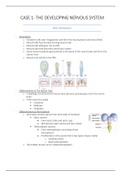Samenvatting
Summary and Real exam questions
- Instelling
- Maastricht University (UM)
If you would like to buy it directly from me the price is €8,00. You can find me on facebook This summary provides an in depth knowledge of all cases, combined with information from lectures and exam questions from 2019/2020. In the end all questions for the mid term exam, kahoots from 2019 lect...
[Meer zien]













